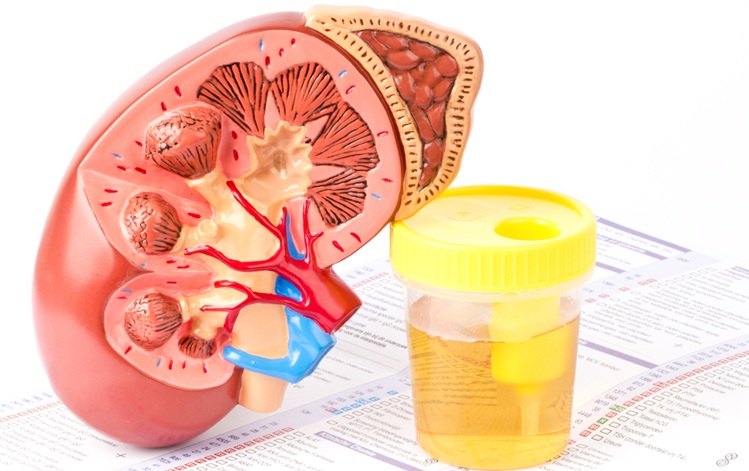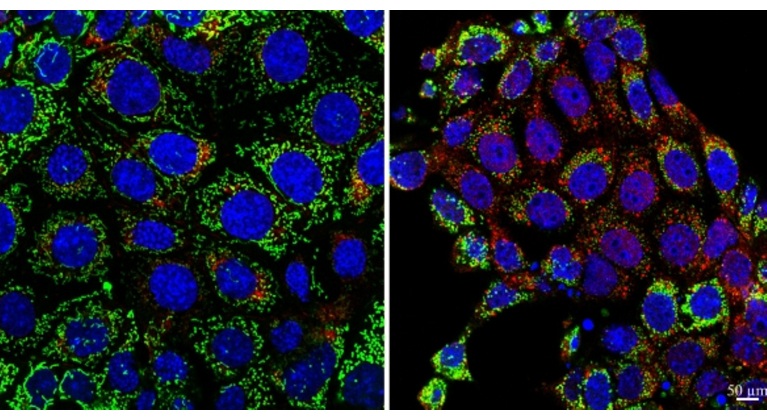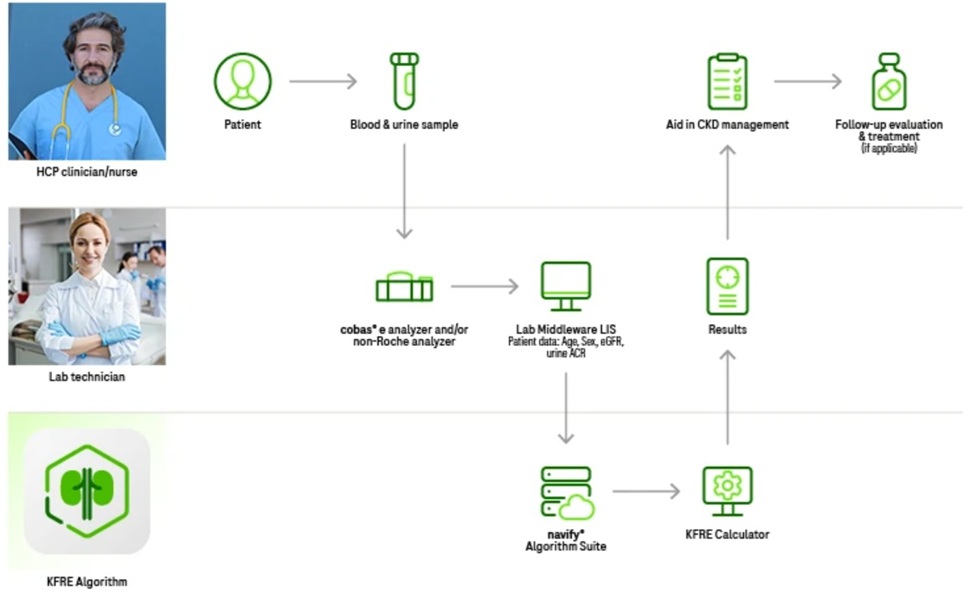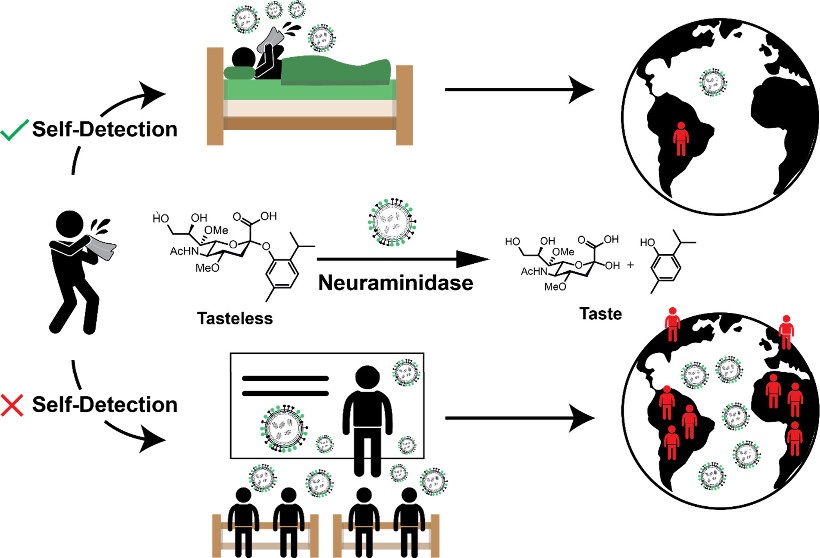Rapid Ebola Virus Detection Assay Evaluated
|
By LabMedica International staff writers Posted on 17 Nov 2015 |

Image: The Diagnostics-in-a-Suitcase used to screen for Ebolavirus disease (Photo courtesy of Institut Pasteur, Dakar).
Ebolavirus (EBOV) infection is mainly diagnosed by various in-house and commercial real-time reverse transcriptase polymerase chain reaction (RT-PCR) assays used in up to 38 laboratories implemented at or close to Ebola treatment centers (ETC) in West Africa.
Transmission of Ebolavirus disease (EVD) occurs almost exclusively from human to human by direct contact with body fluids of symptomatic cases. Consequently, the control strategy for EVD epidemics relies on early identification of EBOV-infected patients and corpses for, respectively, isolation and safe burials.
An international team of scientists led by those at the Institut Pasteur de Dakar (Dakar, Senegal) evaluated a new nucleic acid extraction kit on sera and swabs in combination with an improved diagnostic reverse transcription recombinase polymerase amplification assay for the detection of Ebolavirus (EBOV-RT-RPA) that was compared in parallel to other methods. Serum samples from acute cases and cheek and tongue swabs from deceased were collected. In addition, following an upsurge of EVD cases connected to funeral rites, oral swabs from all deceased were tested at the morgue.
The extraction kit tested was the SpeedXtract Nucleic Acid Kit (SE), (Qiagen; Hilden, Germany). The W-PCR was performed on the SmartCycler (Cepheid; Sunnyvale, CA, USA) using the RNA Master Hybridisation Probes kit (Roche; Manheim, Germany). A mobile laboratory was used which consisted of a glovebox, a Diagnostics-in-a-Suitcase (DiaS), and a solar panel and power pack set. The RT-RPA was performed using a custom-made EBOV-specific exo RT kit with pellets containing optimized enzyme concentrations.
The EBOV-RT-RPA was evaluated in comparison to two real-time PCR assays. The prevalence of EBOV in the swabs tested was 12.9%. The day of death after onset of disease peaked at day 6 (range: 2 to14 days) in the group of 67 swab-positive deceased for whom disease symptoms were recorded. Of 928 post-mortem swabs, 120 tested positive, and the combined SE and EBOV-RT-RPA yielded a sensitivity and specificity of 100% in reference to one real-time RT-PCR assay. Another widely used real-time RT-PCR was much less sensitive than expected. Results were provided very fast within 30 to 60 minutes, and the field deployment of the mobile laboratory helped improve burial management and community engagement.
Related Links:
Institut Pasteur de Dakar
Qiagen
Cepheid
Transmission of Ebolavirus disease (EVD) occurs almost exclusively from human to human by direct contact with body fluids of symptomatic cases. Consequently, the control strategy for EVD epidemics relies on early identification of EBOV-infected patients and corpses for, respectively, isolation and safe burials.
An international team of scientists led by those at the Institut Pasteur de Dakar (Dakar, Senegal) evaluated a new nucleic acid extraction kit on sera and swabs in combination with an improved diagnostic reverse transcription recombinase polymerase amplification assay for the detection of Ebolavirus (EBOV-RT-RPA) that was compared in parallel to other methods. Serum samples from acute cases and cheek and tongue swabs from deceased were collected. In addition, following an upsurge of EVD cases connected to funeral rites, oral swabs from all deceased were tested at the morgue.
The extraction kit tested was the SpeedXtract Nucleic Acid Kit (SE), (Qiagen; Hilden, Germany). The W-PCR was performed on the SmartCycler (Cepheid; Sunnyvale, CA, USA) using the RNA Master Hybridisation Probes kit (Roche; Manheim, Germany). A mobile laboratory was used which consisted of a glovebox, a Diagnostics-in-a-Suitcase (DiaS), and a solar panel and power pack set. The RT-RPA was performed using a custom-made EBOV-specific exo RT kit with pellets containing optimized enzyme concentrations.
The EBOV-RT-RPA was evaluated in comparison to two real-time PCR assays. The prevalence of EBOV in the swabs tested was 12.9%. The day of death after onset of disease peaked at day 6 (range: 2 to14 days) in the group of 67 swab-positive deceased for whom disease symptoms were recorded. Of 928 post-mortem swabs, 120 tested positive, and the combined SE and EBOV-RT-RPA yielded a sensitivity and specificity of 100% in reference to one real-time RT-PCR assay. Another widely used real-time RT-PCR was much less sensitive than expected. Results were provided very fast within 30 to 60 minutes, and the field deployment of the mobile laboratory helped improve burial management and community engagement.
Related Links:
Institut Pasteur de Dakar
Qiagen
Cepheid
Latest Microbiology News
- Fast Noninvasive Bedside Test Uses Sugar Fingerprint to Detect Fungal Infections
- Rapid Sepsis Diagnostic Device to Enable Personalized Critical Care for ICU Patients
- Microfluidic Platform Assesses Neutrophil Function in Sepsis Patients
- New Diagnostic Method Confirms Sepsis Infections Earlier
- New Markers Could Predict Risk of Severe Chlamydia Infection
- Portable Spectroscopy Rapidly and Noninvasively Detects Bacterial Species in Vaginal Fluid
- CRISPR-Based Saliva Test Detects Tuberculosis Directly from Sputum
- Urine-Based Assay Diagnoses Common Lung Infection in Immunocompromised People
- Saliva Test Detects Implant-Related Microbial Risks
- New Platform Leverages AI and Quantum Computing to Predict Salmonella Antimicrobial Resistance
- Early Detection of Gut Microbiota Metabolite Linked to Atherosclerosis Could Revolutionize Diagnosis
- Viral Load Tests Can Help Predict Mpox Severity
- Gut Microbiota Analysis Enables Early and Non-Invasive Detection of Gestational Diabetes
- Credit Card-Sized Test Boosts TB Detection in HIV Hotspots
- Fecal Metabolite Profiling Predicts Mortality in Critically Ill Patients
- Portable Molecular POC System Rules Out UTIs in Just 35 Minutes
Channels
Clinical Chemistry
view channel
VOCs Show Promise for Early Multi-Cancer Detection
Early cancer detection is critical to improving survival rates, but most current screening methods focus on individual cancer types and often involve invasive procedures. This makes it difficult to identify... Read more
Portable Raman Spectroscopy Offers Cost-Effective Kidney Disease Diagnosis at POC
Kidney disease is typically diagnosed through blood or urine tests, often when patients present with symptoms such as blood in urine, shortness of breath, or weight loss. While these tests are common,... Read moreMolecular Diagnostics
view channel
Urine Test Could Replace Painful Kidney Biopsies for Lupus Patients
Lupus is an autoimmune disorder that causes the immune system to attack the body’s own tissues and organs. Among the five million people living with lupus globally, nearly half develop lupus nephritis,... Read more
Blood Test Guides Post-Surgical Immunotherapy for Muscle-Invasive Bladder Cancer
After surgery for muscle-invasive bladder cancer, many patients face uncertainty about whether residual cancer cells remain in their bodies. Now, a new international phase 3 study has demonstrated that... Read more
Mitochondrial DNA Mutations from Kidney Stressors Could Predict Future Organ Decline
Kidney-related diseases are alarmingly common: chronic kidney disease (CKD) affects more than one in seven U.S. adults, while about 20% of hospitalized adults are diagnosed with acute kidney injury (AKI).... Read moreHematology
view channel
Viscoelastic Testing Could Improve Treatment of Maternal Hemorrhage
Postpartum hemorrhage, severe bleeding after childbirth, remains one of the leading causes of maternal mortality worldwide, yet many of these deaths are preventable. Standard care can be hindered by delays... Read more
Pioneering Model Measures Radiation Exposure in Blood for Precise Cancer Treatments
Scientists have long focused on protecting organs near tumors during radiotherapy, but blood — a vital, circulating tissue — has largely been excluded from dose calculations. Each blood cell passing through... Read more
Platelets Could Improve Early and Minimally Invasive Detection of Cancer
Platelets are widely recognized for their role in blood clotting and scab formation, but they also play a crucial role in immune defense by detecting pathogens and recruiting immune cells.... Read more
Portable and Disposable Device Obtains Platelet-Rich Plasma Without Complex Equipment
Platelet-rich plasma (PRP) plays a crucial role in regenerative medicine due to its ability to accelerate healing and repair tissue. However, obtaining PRP traditionally requires expensive centrifugation... Read moreImmunology
view channel
Signature Genes Predict T-Cell Expansion in Cancer Immunotherapy
Modern cancer immunotherapies rely on the ability of CD8⁺ T cells to rapidly multiply within tumors, generating the immune force needed to eliminate cancer cells. However, the biological triggers behind... Read more
Molecular Microscope Diagnostic System Assesses Lung Transplant Rejection
Lung transplant recipients face a significant risk of rejection and often require routine biopsies to monitor graft health, yet assessing the same biopsy sample can be highly inconsistent among pathologists.... Read morePathology
view channel
Tears Offer Noninvasive Alternative for Diagnosing Neurodegenerative Diseases
Diagnosing and monitoring eye and neurodegenerative diseases often requires invasive procedures to access ocular fluids. Ocular fluids like aqueous humor and vitreous humor contain valuable molecular information... Read more
AI-Powered Method Combines Blood Data to Accurately Measure Biological Age
Chronological age tells us how many years we’ve lived, but not how quickly our bodies are ageing. Some people stay healthy well into their 80s or 90s, while others experience decline much earlier.... Read moreTechnology
view channel
Viral Biosensor Test Simultaneously Detects Hepatitis and HIV
Globally, over 300 million people live with Hepatitis B and C, and 40 million with HIV, according to WHO estimates. Diagnosing bloodborne viruses such as HIV and Hepatitis B and C remains challenging in... Read more
Acoustofluidic Device to Transform Point-Of-Care sEV-Based Diagnostics
Rapid and sensitive detection of small extracellular vesicles (sEVs)—key biomarkers in cancer and organ health monitoring—remains challenging due to the need for multiple preprocessing steps and bulky... Read moreIndustry
view channel
Advanced Instruments Merged Under Nova Biomedical Name
Advanced Instruments (Norwood, MA, USA) and Nova Biomedical (Waltham, MA, USA) are now officially doing business under a single, unified brand. This transformation is expected to deliver greater value... Read more





















